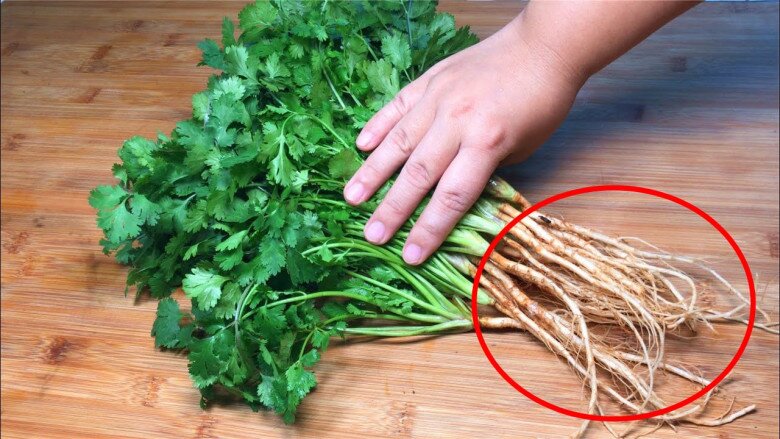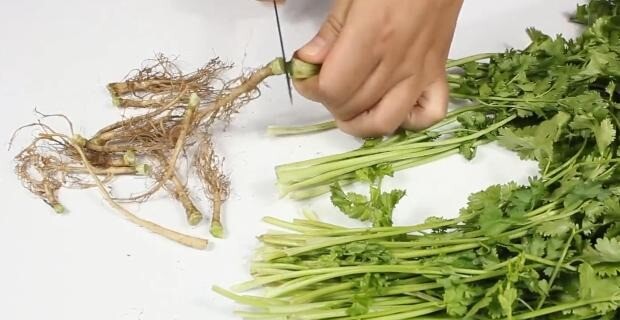While the tender leaves of coriander are favored and commonly used, the roots are often overlooked and discarded. Many believe that the young leaves are the most nutritious and flavorful part of the plant. The roots, which have been underground for an extended period, are thought to be prone to parasitic infections and lacking in nutritional value.

Coriander roots, though packed with benefits, are often discarded by families. Photo illustration.
According to Doctor and Herbalist Nguyen Huu Trong, Institute Director of the Institute for Research in Traditional Medicine and Organic Products of Vietnam and Standing Vice President of the Vietnamese Southern Medicine Association, all parts of the coriander plant have culinary and medicinal uses. The leaves are commonly used as a culinary herb, the seeds are pressed for essential oil, and the stems are used for bathing.
Coriander roots, however, are the least utilized part of the plant, often ending up in the trash after the leaves are plucked. This is a significant waste, as these roots, when cleaned, can be put to various uses. For instance, they can be added to a pot of boiling meat, imparting a wonderful aroma and flavor. Alternatively, they can be stored in the refrigerator and used in soups and broths, lending a natural sweetness and distinctive fragrance.
Modern medical research has revealed that coriander roots contain essential oils such as linalool and pinene, which give off a refreshing and subtly sweet aroma. When cooked in broth, these oils dissolve, infusing it with a natural sweetness without the need for excessive seasoning.
Additionally, the roots contain natural carbohydrates that, when cooked for an extended period, dissolve into the broth, imparting a gentle sweetness without the harshness of refined sugar. Coriander roots, when cooked with bones or other ingredients, enhance the savory umami flavor. They not only contribute sweetness but also balance the other flavors, resulting in a richer, more robust broth.

Coriander roots are valuable in both culinary and medicinal applications, but caution should be exercised when using them. Photo illustration.
Beyond their culinary uses, coriander roots are considered a treasure for their therapeutic benefits. They aid in perspiration, provide relief from colds, support digestion, help detoxify the liver, and promote weight loss. They are also effective in reducing fever in children and alleviating cold symptoms.
Using coriander roots as medicine is simple:
– Step 1: Cut and clean the coriander roots thoroughly.
– Step 2: Place the roots in a pot of water and bring it to a boil.
– Step 3: Use pre-boiled water and cook the roots at around 70 degrees Celsius to avoid boiling at 100 degrees, as many heat-sensitive nutrients can be lost. The resulting coriander root water can be consumed hot or cold, offering various health benefits.
Doctor Nguyen Huu Trong advises that coriander roots should be thoroughly washed to remove any impurities and always cooked or boiled to eliminate any potential parasites. Raw or undercooked coriander roots should not be consumed.






























